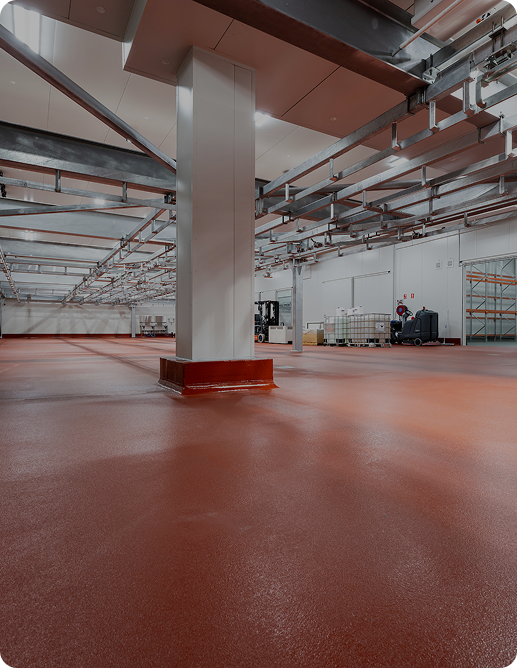Floors That Adapt: Thermal Shock Resistance in Resin Systems
In food and beverage manufacturing, extreme temperature changes are part of daily operations. Whether it’s hot water washdowns, steam cleaning, or rapid chilling in cold rooms, floors are constantly under stress.
If the flooring system can’t keep up, it’s not just a maintenance issue—it’s a hygiene and safety risk. Cracks, delamination, and surface failures create hidden pockets where bacteria can thrive and standards can quickly break down.
That’s where thermal shock resistant resin flooring comes in. These floors are specifically engineered to withstand rapid and repeated temperature swings, providing long-term durability, safety, and peace of mind in the most demanding environments.
What is Thermal Shock and Why Does It Matter?
Thermal shock happens when a surface experiences a sudden and extreme change in temperature—for example, going from ambient air to a 90°C hot wash, or from a warm production area into a freezer. Standard flooring materials like tiles or conventional epoxy aren’t built for these conditions.
When exposed to thermal shock, they can crack, delaminate, or allow moisture to seep underneath. This leads to hygiene risks, higher maintenance costs, and in some cases, production downtime.
How Resin Flooring Manages Thermal Stress
Not all resin floors are created equal. High-performance systems like polyurethane cement (PUC), including our SteriFloor Stärke system, are designed specifically for environments where temperature extremes are a daily occurrence.
These systems are:
- Able to tolerate rapid temperature swings from -40°C to +120°C
- Formulated to expand and contract with the substrate without cracking
- Moisture-tolerant and chemically resistant
- Seamless and non-porous, supporting hygiene and cleanability
- Durable enough for heavy traffic and high-pressure cleaning
Designing for Heat: What to Consider in High-Temperature Zones
Areas exposed to hot water, steam, or refrigeration demand careful flooring design. To ensure long-term performance, it’s essential to consider:
- Thermal movement – The flooring must flex with changes in temperature, not crack against them.
- Moisture exposure – Surfaces need to resist water ingress, especially during routine washdowns.
- Hygiene control – Seamless, joint-free floors reduce bacteria harborage and support faster cleaning.
- Drainage integration – Proper slope and finish around drains prevent pooling and microbial growth.
- Durability – The system must resist impact, abrasion, and wear from equipment and foot traffic.
By addressing these factors, thermal shock resistant resin systems offer a flooring solution that not only holds up under pressure but actively supports food safety and compliance goals.
Where These Floors Perform Best
Thermal shock resistant flooring is ideal for:
- Meat, poultry, and seafood processing
- Dairy production and packing areas
- Beverage plants and bottling lines
- Commercial kitchens and central cook zones
- Cold rooms, blast freezers, and chill tunnels
- Any area subject to hot water cleaning or temperature swings
Final Thoughts
In environments where hygiene and uptime are critical, the floor beneath your feet must do more than just look clean—it has to perform under pressure. Thermal shock resistant resin flooring systems are designed to meet the demands of modern production facilities and contribute to long-term operational reliability.
For facilities reviewing their flooring systems or planning an upgrade, understanding thermal performance should be a key part of the decision-making process.


